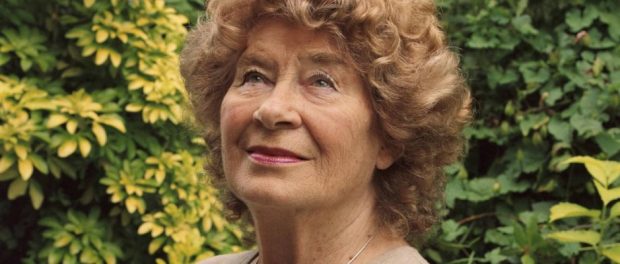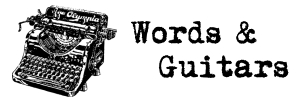Shirley Collins Lodestar – Bristol Colston Hall

Folk’s gentile stereotype – witness Viz’s old cartoon The Folkie – belies the intensity it can muster in the hands of skilled practitioners. Arriving at Colston Hall, one was greeted by a stage festooned with mic stands and guitar heads, a veritable spiked barricade standing ready for the whirl of action the night was to see.
Two years ago at London’s Union Chapel, at a show by Current 93, David Tibet had persuaded Shirley Collins that there was still an audience for her, a desire to see and hear her perform. The audience were enraptured by her aged but authoritative tones as she sang ‘All The Pretty Little Horses’ (a song covered by Current 93) and ‘Death and the Lady’. That memory made clear folk’s rightful claim to being a record of real people and their own personal journeys – and this multi-artist event a celebration of one of the genre’s great interpreters.
It was a thread that ran through the evening’s programme. Songs would be introduced with tales of their origin; for example, that the first recording of one had been ‘collected’ (the word used constantly) from a nine year old girl in 1920s Appalachia recalling her aunt’s singing; or that it was sung among Scottish travellers then passed to America. Many seemed to come from a gypsy woman encountered in Ireland. Actor Pip Barnes – both compere and participant – filled in the history of others: sung by a gardener in some small English town in 1955; written by an English religious zealot several centuries past then no known versions or interpretations until its reappearance in the early 1900s. Woven around these moments were mentions of first encounters with Collins: at a folk package event at Colston Hall in 1965 or a London film event in 1970. Memory was the most tangible substance making up both the night and the music.
That’s not to say any moment was dated or untouchable to an audience today. It was noticeable that the show went beyond the usual ‘youngsters opening for old vets’ stance: there was a truly intergenerational intertwining. Musicians and performers of all ages entered, left, rejoined, with an obvious affection, respect and bonhomie between all involved. Part of the show’s impact was down to the effective structure, pacing and diversity of the show. The first half consisted of four 2-3 song appearances by artists; brief interludes where Barnes would introduce a performer, usually wrapping a story around it. At one point a morris dancer energetically cameoed. The first half closed with Ian Anderson, editor of Froots magazine presenting Shirley Collins with an Album Of The Year award, presented, of course, by a moonlighting female morris dancer wearing freakish headgear.
Sam Lee made a particular impression: it takes bravery to get up on stage – more so when one performs for solo voice. His at-ease style matched the smooth assurance of his voice. With no instruments, visuals or other souls to distract, the simple rise, fall and flick of his hand as he physically signed the movement of his voice became a visual focus for everyone in the room – a genuine human touch. He was succeeded by Olivia Chaney whose interest in baroque and renaissance music very clearly informed the elaborate and powerful flit-swoop-and-dart of her voice: ‘O Solitude’ was a highlight. Blur’s Graham Coxon was a curious presence. He carries the ramshackle ghost of Britpop laddishness about him and his voice was less distinguished than those of his two predecessors, but this was made up for by the most intricate instrumental work of the night. His guitar playing was energetic, detailed and apparently as natural to him as breathing: at one point, between notes, he somehow found time to brush a hand across his brow without in any way interrupting the flow of the song.
The second half began with the barricade stripped away. The cluster of instruments had now departed. It opened up the space considerably with the performers seated in a curve with drums at far right, then various guitars, fiddles, keyboards arrayed across the breadth of the stage. A big presence was Ossian Brown of Coil/Cyclobe on hurdy-gurdy and other intriguing instruments. Along with his Cyclobe partner Stephen Thrower he had a significant role in the recording of Collins’ first album in almost four decades: 2016’s Lodestar. The 81 year-old sat at the heart of proceedings, both the focus of attention and further away from the audience, almost tucked under the large screen that played above the performers. Frail is the wrong word for her: in some her movement would seem slow; here she merely looks precise and considered – there’s a stateliness to her unpretentious presence.
There was something both joyous and sad to what transpired: death haunts song after song, veiled and made palatable by the upbeat energy of magical performances. The visuals were a remarkable presence in themselves. For example, photographs from a Jack in the Green celebration amused because each moment of English traditionalism tended to feature a can of beer, a crafty fag, dollar sign jewellery or a shop sign somewhere in shot. It was a visceral shock, however, to see the clips from the video for ‘Death And The Lady’, Collins loomed over by skull-faced beings that dog her footsteps, a wall of skulls, an intense study of Collins’ own face. It wasn’t a gloomy experience, more a calm, mature and comfortingly matter of fact acceptance that we were here to bear witness to this lady and an encroaching finality – there’s not an ounce of self-indulgence about her. Her voice, similarly, fills each song up with its less than diva-esque styling – perfect for songs about lives lived and lost in unglamorously real circumstance.
The truthfulness to her creaking tone sounds more beautiful than auto-tune: the edges, angles and sheer defiance here well-earned the standing ovation and the refusal of the audience to leave until everyone on stage had exited. A beautiful night spent smiling and laughing at darkness, in the company of a singer who deserves her legend.
